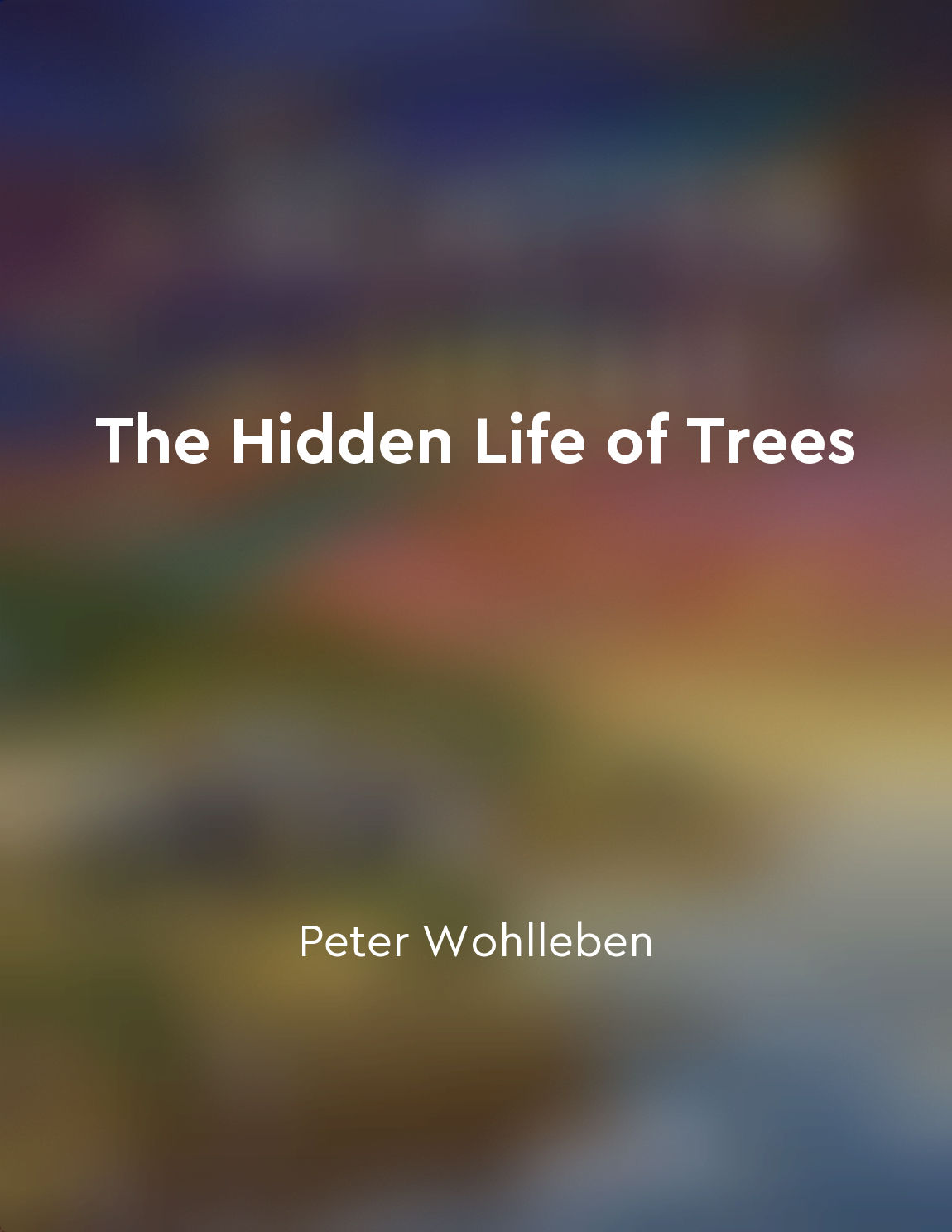Mother trees nurture their offspring from "summary" of The Hidden Life of Trees by Peter Wohlleben
In the forest, trees are not solitary beings. They are part of a complex network, connected underground through an intricate system of roots that allow them to communicate with each other. Mother trees play a crucial role in this network, not only providing shade and shelter for their offspring but also nurturing them in ways we are only beginning to understand. When a mother tree is injured or dying, she sends chemical signals to her neighboring trees, warning them of potential threats. In response, these neighboring trees increase their production of defensive chemicals to protect themselves. This communication system allows trees to support each other and ensure the survival of the forest as a whole. Mother trees also share nutrients with their offspring through their interconnected root systems. When a tree is struggling to grow in poor soil or under challenging conditions, the mother tree will send extra nutrients through the roots to help it thrive. This selfless act of giving ensures the survival of the next generation of trees and strengthens the overall health of the forest ecosystem. Through their nurturing actions, mother trees demonstrate a deep sense of interconnectedness and cooperation that is essential for the well-being of the forest. By supporting their offspring and sharing resources with other trees, they contribute to the resilience and longevity of the entire ecosystem. As we continue to study and learn from the hidden life of trees, we gain a greater appreciation for the complex web of relationships that sustain life in the forest.Similar Posts

Trees can live for centuries, passing down knowledge through generations
Trees have the remarkable ability to live for centuries, far surpassing the lifespan of any individual human. Over the course o...

They assist each other in times of drought or disease
In times of drought or disease, trees in a forest are not as alone as they may seem. They actually have a remarkable ability to...

Their hidden life reveals the interconnectedness of all living beings
In the depths of the forest, beneath the surface of the earth, a hidden world thrives, where trees communicate, support, and de...

Their interconnectedness is essential for survival
In the forest, trees are not loners. They are part of a community, a network of interconnected individuals that rely on one ano...
